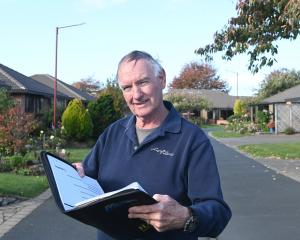It may have felt predominantly wet and windy over the past month, but Niwa climate scientists say many parts of Otago have just experienced the hottest November on record.
Record mean maximum air temperatures for November were recorded at Oamaru (20.2degC), Dunedin Airport (20.3degC), Musselburgh (19.0degC), Balclutha (19.3degC), and Nugget Point (17.2degC).
Ranfurly also recorded 20.5degC — the second-equal highest mean maximum air temperature since records began.
Unusually high temperatures hit most parts of New Zealand in the first week of November, caused by a northwesterly airflow delivering warm dry air from the interior of Australia.
This caused record daily maximum air temperatures on November 2 in Lumsden (27.5degC), Clyde (32.5degC), and Balclutha (28.6degC); the highest equal daily maximum was recorded in Alexandra (32.2degC) on November 2; and the second highest daily maximums were recorded in Oamaru (31.1degC) on November 2, Nugget Point (26.9degC) on November 3, and Ranfurly (29.0degC) on November 2.
Niwa principal climate scientist Brett Mullan said it was a trend which covered most of New Zealand.
Data from Niwa’s Seven-Station Series, which began in 1909, showed last month’s temperature was 1.55degC above the 30-year average.
The previous record for the hottest November on record was jointly reached in 1954 and 2013, when the temperature was 1.38degC above average.
‘‘This year is tracking to be the fourth warmest on record with just on a month to go.
‘‘If the ranking remains the same, it will sit behind 2016, 1999 and 1998, respectively.’’
Dr Mullan said the nationwide average temperature for last month was 15.3degC.
The warmth was widespread, with many locations throughout the country observing record or near-record mean temperatures for November.
‘‘Wairoa, in the Hawke’s Bay, recorded a mean maximum temperature for November of 26.2degC.
‘‘This is a new record for New Zealand, exceeding the previous November record of 25.6degC, which was also recorded in Wairoa, in 1953.’’
November was not just notable for its warmth, he said.
Rainfall was plentiful for many western and southern parts of the South Island.
As a result, hydro lake storage levels increased dramatically during the month.












